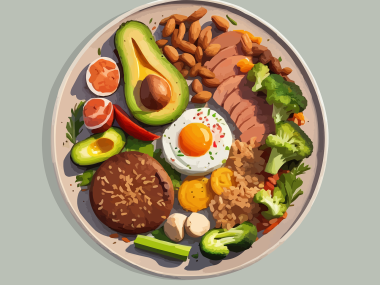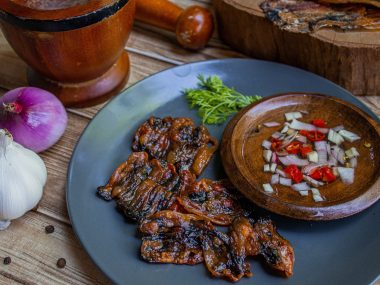How To Manage Portion Sizes for Weight Loss.
Starting on a weight loss journey often involves making mindful choices about what we eat and how much we consume. Portion control plays a crucial role in managing caloric intake, supporting weight loss goals, and promoting overall health and well-being.
We’ll share actionable tips and strategies to help you manage portion sizes effectively, ensuring a safe and successful journey towards your weight loss goals.
Understanding Portion Sizes
Portion sizes refer to the amount of food we choose to eat at a given time. While it’s essential to consume a balanced diet with a variety of nutrients, overeating, or consuming excessively large portions can lead to weight gain and hinder progress towards weight loss goals.
By practicing portion control, we can strike a balance between enjoying our favourite foods and maintaining a healthy weight.
1. Practice Mindful Eating
Mindful eating involves paying attention to the sensory experience of eating, including taste, texture, and hunger cues. By slowing down and savouring each bite, we can better recognise when we’re satisfied and prevent overeating.
Before reaching for seconds or additional servings, pause to assess your hunger level and consider whether you truly need more food.
2. Use Visual Cues
Visual cues can be helpful tools for estimating portion sizes without relying on measuring cups or scales. For example, a serving of protein (such as chicken or fish) should be about the size of your palm, while a serving of carbohydrates (such as rice or pasta) should be about the size of your fist.
Fill the remainder of your plate with non-starchy vegetables to add volume and nutrients without excess calories.
3. Plate Your Meals Thoughtfully
Take a proactive approach to portion control by plating your meals thoughtfully. Instead of eating directly from containers or serving dishes, portion out your food onto plates or bowls to create visual boundaries and prevent mindless overeating.
Use smaller plates and bowls to naturally limit portion sizes and encourage mindful eating habits.
4. Listen to Your Body’s Hunger Cues
Tune into your body’s hunger and fullness cues to guide your eating patterns. Eat when you’re hungry and stop when you’re satisfied, rather than relying on external cues or arbitrary portion sizes.
Practice eating slowly, chewing thoroughly, and checking in with your body throughout the meal to gauge your level of fullness.
5. Be Mindful of Liquid Calories
Liquid calories from sugary beverages, alcohol, and high-calorie coffee drinks can contribute to excess calorie intake without providing a feeling of fullness.
Be mindful of your liquid calorie consumption and opt for water, herbal tea, or other low-calorie beverages to stay hydrated and support weight loss goals.
6. Plan Ahead and Pre-Portion Snacks
Set yourself up for success by planning ahead and pre-portioning snacks and meals. Prepare healthy snacks such as cut-up fruits and vegetables, nuts, or yoghurt in advance and portion them into single-serving containers or bags.
Having pre-portioned snacks readily available makes it easier to make nutritious choices and avoid overeating.
7. Practice Moderation with Treats
Allow yourself to enjoy your favourite treats and indulgences in moderation while practicing portion control. Rather than depriving yourself entirely, savor smaller portions of higher-calorie foods and desserts occasionally, while balancing them with nutrient-dense options.
Enjoying treats mindfully and in moderation can help prevent feelings of deprivation and promote long-term adherence to a healthy eating plan.
8. Monitor Portion Sizes When Dining Out
Be mindful of portion sizes when dining out at restaurants, where servings are often larger than what we would consume at home.
Consider sharing entrees with a dining companion, ordering appetizers or smaller plates, or requesting a to-go box to portion out leftovers before starting your meal.
Pay attention to hunger cues and stop eating when you feel satisfied, rather than finishing everything on your plate out of obligation.
9. Educate Yourself on Serving Sizes
Familiarize yourself with standard serving sizes and recommended portion sizes for different food groups to make informed choices.
Refer to nutrition labels, online resources, or portion control guides to understand appropriate serving sizes and adjust your portions accordingly.
Over time, you’ll develop a better understanding of portion sizes and be able to make healthier choices intuitively.
10. Stay Consistent and Patient
Consistency is key when it comes to managing portion sizes for weight loss. Stay committed to practicing portion control habits consistently, even when faced with challenges or setbacks.
Remember that progress takes time, and small changes made consistently over time can lead to significant results. Be patient with yourself and trust the process as you work towards your weight loss goals.
Conclusion
Mastering portion control is a valuable skill that can support your weight loss journey and promote overall health and well-being.
By practicing mindful eating, using visual cues, listening to your body’s hunger cues, and planning ahead, you can manage portion sizes effectively and make sustainable progress towards your goals.
Incorporate these strategies into your daily routine, stay consistent, and be patient with yourself as you navigate your weight loss journey.
With dedication, mindfulness, and a positive mindset, you can achieve lasting success and enjoy a healthier, happier life.






